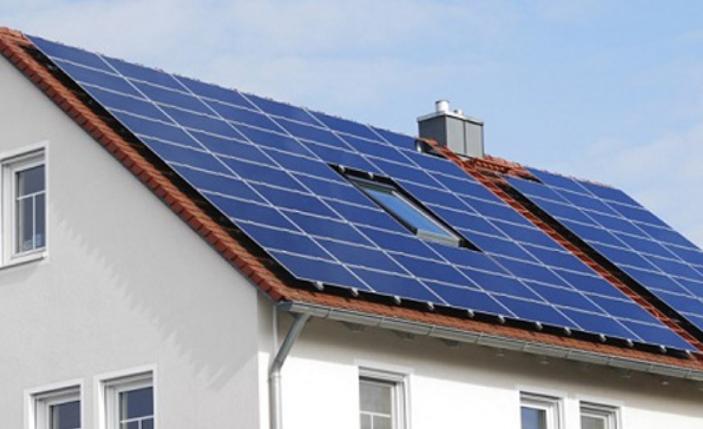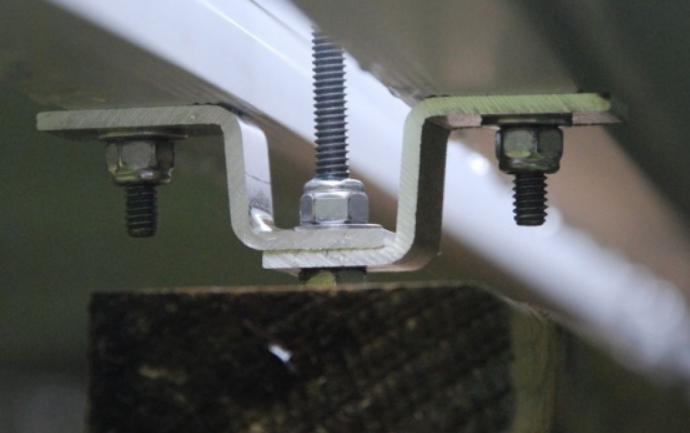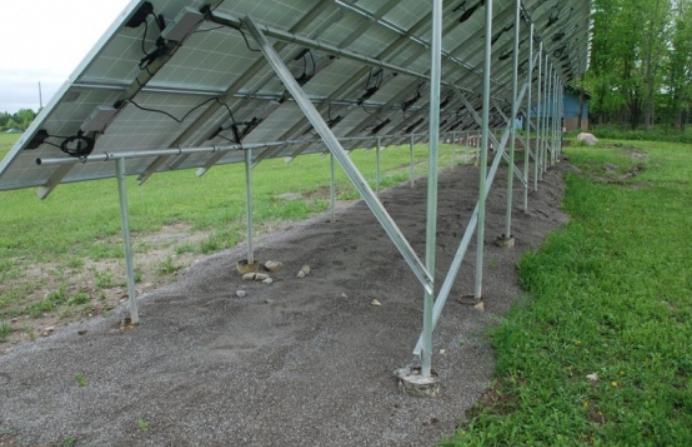Types and ways to install solar panels
Solar panels - a good solution for both private homes and cottages. On a summer cottage, you do not have to bring electricity, you can put a few panels and provide the house with energy. Installation of solar panels requires some knowledge and skills, but if you want to understand the work can anyone. The main thing is to learn the specifics of installation and choose the equipment for your needs.
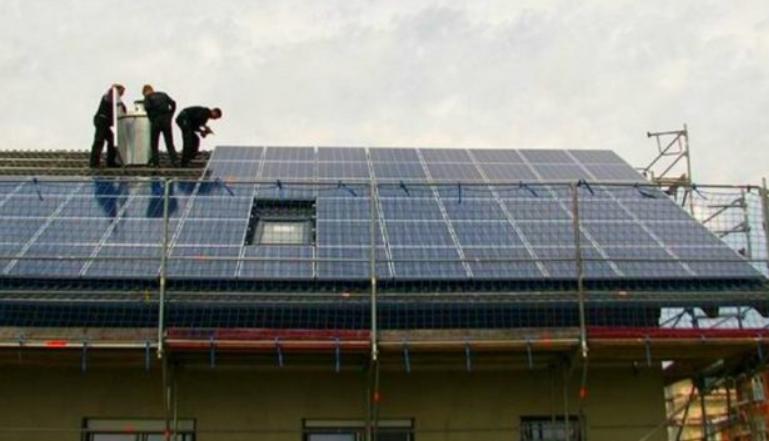
Installation locations
When choosing the location of solar panels, it is worth considering several important criteria. Only then can you determine where best to place the modules on the site, so that it will give the best effect. The main recommendations are as follows:
- For the northern hemisphere, you need to orient the solar panels to the south side, for the southern - the opposite. This is the ideal position, but if there is no possibility to place the slope strictly to the south, the southeast or southwest will do.
- The slope should also be chosen depending on the region. The simplest option, which experts advise - the slope angle should be approximately equal to the latitude in which the house is located. For example, Moscow is at latitude 55, but it is not always possible to raise the modules to this angle, so the maximum possible value is taken.
- You can install solar panels only where there is no shade. If the surface is shaded, the efficiency will be low. Trees and other plants can be removed, but if the buildings are in the way, it will not be possible to solve the problem.
- Choose an option that is easy to maintain. The batteries themselves do not need special care, but several times a season the surface needs to be cleaned. From dust and dirt, the efficiency decreases. It is also necessary to provide access to all connections and modules, they also need to be periodically checked.
- Consider the permissible load on the roof, if the system will be located there. Most often there is no problem, since the batteries do not weigh much, but if the rafter system is old, and the roof is not very reliable, you need to either redo it, or strengthen it.
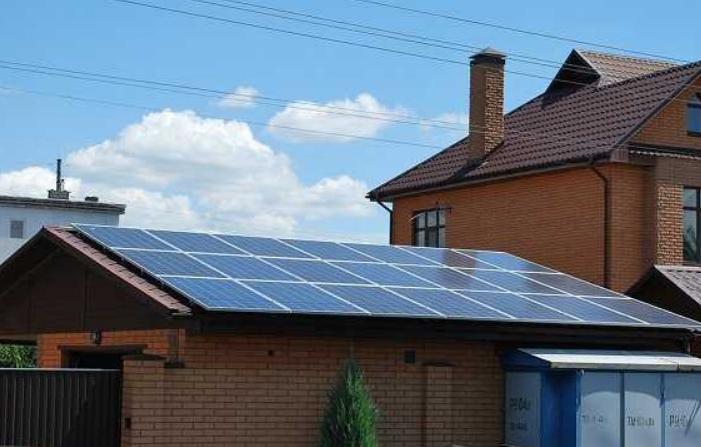
For maximum effect, it is desirable to change the angle of the batteries. In summer to increase by 12 degrees, and in winter to reduce by the same amount.
There are several options for mounting the panels, each of them has its own characteristics. It is better to think in advance about this point and assess the difficulty of implementing the chosen technology. Use the method that requires less effort and expense. The basic methods are as follows:
- Installation of solar panels on the pitched roof of a house or other building. The most common solution, which saves space and reduces the chance of accidental damage. In this case, the electricity goes directly to the building, which increases the efficiency of the system. For all types of roofs have ready-made fasteners, so there are no problems with installation.Installation on steep slopes is more complicated, but the efficiency is much higher.
- Flat roofs. Less common, but if you want to install solar panels on such a surface, most often a frame is made to provide at least a slight angle of inclination. This will increase the efficiency of the system and simplify its maintenance.
- Installation on the wall - an option that is rarely used because of the complexity of installation and the large area of the elements. In this case, it is necessary to first make a supporting system, and on it to mount the solar panels.
- When the modules are located on the ground, a framework with a suitable angle is usually made and they are installed in several rows. In this case, you can make the system both fixed and rotary, to adjust to the sun, this will increase the efficiency of electricity generation.
You can use two installation options, it is not necessary to put all the solar panels in one place.
It would be useful to read: Do-it-yourself installation of 300 solar panels
Place for the inverter
This equipment converts the direct current from the solar panels into alternating current, which is used by all household appliances. It should be selected based on the characteristics of the panels. Everything is calculated in the project, so it is necessary to buy a version with the right characteristics. When choosing a location, you should consider the following:
- The closer the converter to the power source, the less energy is lost in transmission and the more efficient the system works. Therefore, if possible, it should be placed as close to the connection point as possible.
- When installing the panels on roof or wall of the house without using batteries, it is best to put the inverter in the attic. The temperature there is suitable for the equipment, it is better to prepare the place in advance, ensure good ventilation to prevent overheating in summer.
- Ensure convenient maintenance of the inverter. Do not put it in places with limited access, because from time to time you need to clean the housing from dust and check the connections. In order not to constantly monitor the readings, it is better to choose models with a wireless module, so that the data are transmitted to the Internet and you can watch them via smartphone or computer.
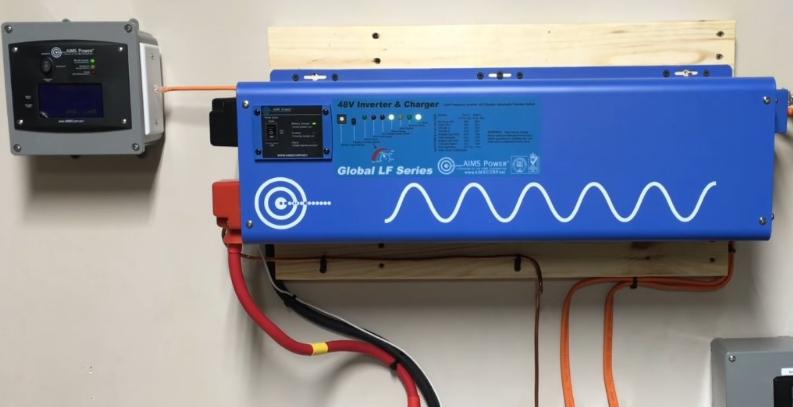
The main thing is not to put the equipment too far away and protect it from adverse influences. Follow the manufacturer's installation recommendations to avoid any problems.
Mounting methods
It is worth considering the most common methods of installation on the ground and on the roof. All options for the ground will also work for a flat roof, with the difference that you first need to put the brackets. There are several methods, each with its own peculiarities:
- A wooden frame for ground installation is the easiest solution. To begin with, you should choose the right direction, then think about the method of attachment. You can dig the posts into the ground, or you can put foundation blocks and install the structure on them. It is better to use bars pre-treated with a protective agent. It is easier to fix the panels with aluminum corners and threaded rods, these elements also serve as grounding. A sample is shown in the photo below.
- Frame made of wood with aluminum rails. Due to the fact that the fixing of solar panels is made with special fasteners, the work is simplified and the quality is increased. The design is assembled in the same way as described above, but at the side of the panels are placed guides, on which the energy collectors are located.Mounting the solar panels on a wooden structure.
- Metal construction. The easiest way to make it is to use pipes (both round and profiled) or an angle. The frame is welded so that it is strong and will not break under load, on the outside, brackets for guides are attached. This type is also good in that the framework also serves as grounding.Metal frame for strength should be strengthened with diagonal braces.
- On the roofs of classic or flexible tiles must first be installed brackets that go under the roofing material. They do not disturb the integrity of the roof. Aluminum guides are attached to the brackets, then the installation of solar panels. To do this, use special screw clamps, 4-6 pieces per element.
- If the roof is metal tile or profiled sheeting, special fasteners should be used. They are screwed through the metal with special screws, the fixing place is closed with a washer with a rubber layer to prevent water from getting into the hole. Then the work is done as usual - put the rails and fasten the panels.
When attaching the panels, make sure they are secure, they should not dangle and move.
Connecting the battery
To create an autonomous grid in the house, you need to properly connect the solar panels. The work can be done by anyone who knows at least a little bit about the subject and knows how to use a screwdriver. Observe the following instructions:
- Even at the stage of fixing the solar panels, you need to lay the cable and connect it securely to the modules, following the scheme. Consider how to properly place the wiring, if necessary, use a corrugated non-flammable sleeve.
- Carefully study the instructions that come with the controller. This unit not only regulates the charging of batteries, but also monitors their condition and stops the power supply when they are fully charged. Sort out the connection pins so that you don't mix anything up.
- First connect the controller to the battery pack. This is to ensure that it monitors the equipment. The first pair of terminals should be used for the connection.
- Next, connect the cable coming from the solar panels to the second pair of terminals. The last connection is the low-voltage night light, which is what the third pair of terminals is for.
- The inverter converts the direct current into alternating current for the normal operation of the household appliances. First, you need to unpack it, study the instructions and check the package. There should be wires to connect, one side attaches to the inverter, the other side has clips that are put on the terminals of the battery.
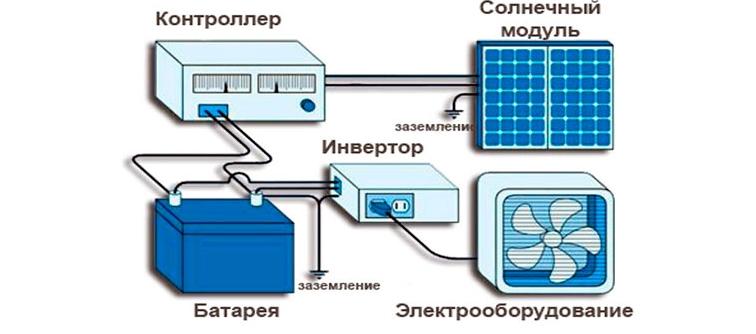
Approximate prices for installation by specialists
To specify the exact cost is difficult, since it differs greatly in different regions. To begin with, it is necessary to break down what the price depends on:
- The place of installation. The more complex the roof, the more preparatory work is required and the more will be asked for the work.
- The complexity of the supporting structure. The frame may be simple, or it may require the strengthening of the roof or the use of additional elements.
- Additional work. If the system is done on a turnkey basis, it will cost more. To make it cheaper, many people do some of the work with their own hands.
Many companies, when you buy a set of solar panels and accessories from them, give a discount on installation.
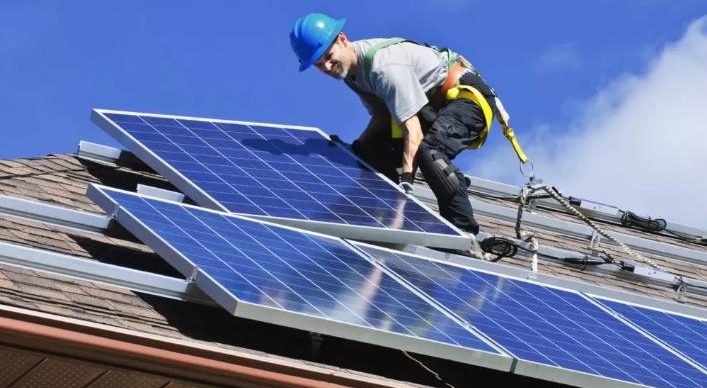
If we deal with the average price, then install solar panels will take about 5000 for each element with connections. This is the minimum price, in large cities it can be much higher.
Permit for installation
At present, you do not need a permit to install solar panels if they are installed on your property and do not interfere with the neighbors. In high-rise buildings, when installing on a balcony, you need to ask the architecture to confirm that the design will not deteriorate the appearance of the building.
If the system will give away excess to the public network, you must call an electrician from the supplying company to make the connection. If you do not do this, you may be issued a fine.
Install solar panels is not difficult, but we will have to understand the features of the system and choose the best place on the site. It is best to buy a complete set, in which all the parts fit together and do not need to calculate anything. Also remember that batteries are always bought separately and are not included in the kit.
